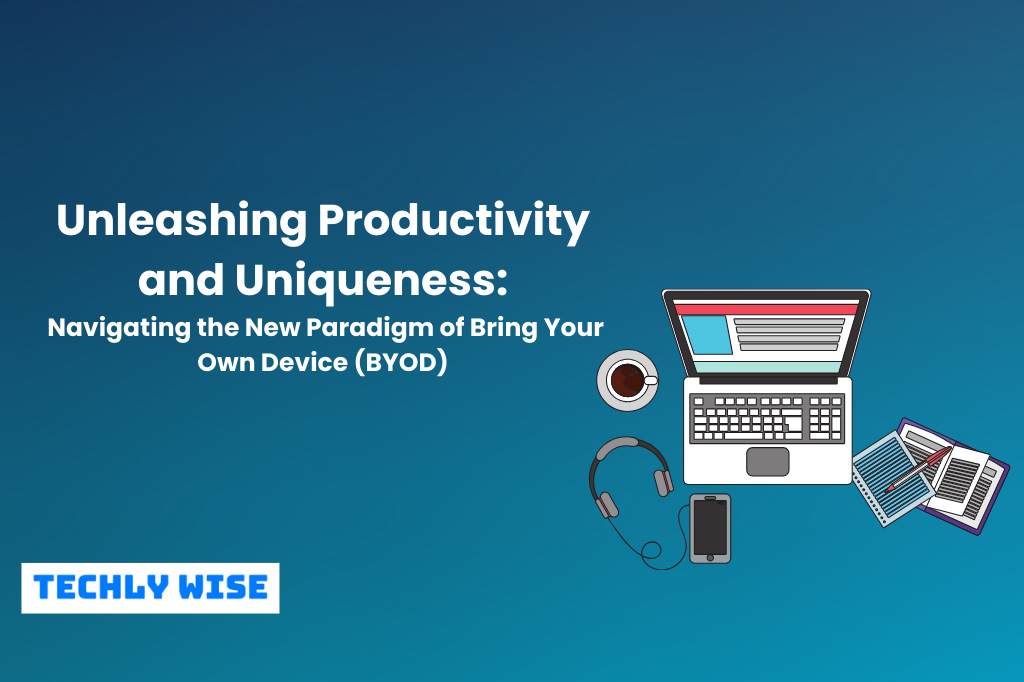
The term “bring your device,” or “BYOD,” refers to a corporate IT policy that establishes when and how workers, contractors, and other authorized end users may access business data and carry out their job obligations using their laptops, smartphones, and other personal devices while connected to the company network.
BYOD started to take off in the late 2000s with the release of iOS and Android smartphones, as more and more employees began to favor these devices over the time-honored company-issued mobile phones.
The COVID-19 pandemic and the resulting shortages of chips and supply chain disruptions forced many more organizations to adopt BYOD policies, allowing new workers to work while they awaited a company-issued device.
Why is BYOD Important?
The advantages of BYOD are numerous: It can improve user experience by giving employees the freedom to work and communicate, however they see fit and the ability to use familiar devices.
Businesses that use application virtualization have access to more administration and security options. Employees can use their devices to access, for instance, a proprietary application that an employer hosts in the cloud.
Similar to server virtualization, desktop virtualization enables users to connect to a separate logical operating system instance without actually installing anything on their machine.
Even if they provide employees with a second device, businesses will probably need to create a BYOD policy. Even when it’s against the policy, employees will inevitably access company data on their devices, so it’s crucial to have device security features in place to reduce risks and vulnerabilities.
Read Digital Twin Technology: Exploring Purpose, Benefits, Drawbacks.
Can you Explain How Bring Your Own Device (BYOD) Works?
Employers and employees have an opportunity thanks to BYOD. Normally, a company will create a BYOD policy that tackles security issues, the kinds of devices permitted, and other crucial factors.
Before consenting to a policy, employees should read and comprehend it. Employers may ask workers to install a particular software on their devices. Devices used to access sensitive company data may also have security measures installed by the company. For instance, some businesses demand software that, when it senses possible interference, wipes corporate data.
Stakeholders in the company should be aware that not all employees will wish to take part in a BYOD program, particularly if the mobile device management (MDM) policy calls for the blacklisting of specific apps.
Policies that provide remote access to staff devices by employers are also widespread. Employees might prefer a clearer division between work and family life. If so, individuals might want to use separate devices for work and personal use.
BYOD Policies
BYOD policies specify the conditions under which employee-owned devices may be used at work and the security guidelines end users must follow when using them. While a BYOD policy’s contents will change depending on the objectives of an organization’s BYOD strategy, the majority of device policies include one or more of the following:
Acceptable Use:
BYOD policies usually specify when and how employees can use their equipment for work-related tasks. For instance, acceptable usage policies might outline how to safely utilize a virtual private network (VPN) to access company resources and list authorized business-related apps.
When appropriate, BYOD policies may also include data security and preservation guidelines that abide by laws like the General Data Protection Regulation (GDPR), the Sarbanes-Oxley Act, and the Health Insurance Portability and Accountability Act (HIPAA).
Permissions and Privacy:
The actions the IT department will take to preserve employee privacy on mobile devices are often outlined in BYOD rules. These procedures include how the business will maintain the separation of employee personal data and company data.
Security Precautions:
BYOD guidelines often establish security requirements for employee devices. These can include guidelines for two-factor authentication and minimal password requirements, methods for backing up sensitive data, and what to do if a device is lost or stolen.
IT Assistance:
The BYOD policy may outline the scope of an organization’s IT department’s support for employees who have malfunctioning or broken personal electronics.
Offboarding:
Finally, BYOD policies often include instructions on what to do if an employee quits their job or withdraws their device from the BYOD program. These exit strategies frequently include ideas for clearing the device’s memory of private company information, denying it access to network resources, and deactivating the user or device account.
Read Nanotechnology: Promise and Peril.
Guidelines for Creating a Bring Your Device Policy
IT departments need to decide whether and how to safeguard personal devices and set access permissions. Most importantly, a clear BYOD security strategy should advise and instruct staff on how to use BYOD without jeopardizing networks or organizational data.
Important BYOD policy components include:
- Categories of permitted devices.
- The extent of (if any) IT support provided for personal devices.
- Data ownership and security rules.
IT managers must strike a compromise between organizational security and employees’ privacy as they decide what level of assistance they will give to personal devices.
Advantages of BYOD
The BYOD debate is especially crucial for businesses with sizable numbers of non-desk employees. Companies may be able to enhance communication between desk-bound employees and their non-desk counterparts by allowing a remote workforce to use their mobile devices. The data indicate no. In reality, the tale they relate to illustrates the astonishing success of personal smartphones in the business world.
Productivity:
According to a Forbes poll, 49% of workers feel they are more productive while using their gadgets. Workers generally avoid utilizing a gadget they are uncomfortable with to communicate. It is advisable to provide your staff access to a device they are comfortable using to work with to make sure that pertinent information reaches them on the appropriate channels.
Flexibility:
Employees can operate from any location without the need for additional tools by being given the freedom to utilize their own devices to access work-related files. A BYOD policy also gives the company more independence, which is crucial for job satisfaction and strong motivation. One of the primary motivators for employee happiness is flexibility, which can also boost commitment, morale, and engagement.
Familiarity:
Less training is required when BYOD regulations are in place since employees are already comfortable using and getting the most out of their own devices. As a result, you will observe an improvement in efficiency and a decrease in the amount of time needed to accomplish tasks, which will positively benefit production.
Monetary Savings:
BYOD allows businesses to save money by avoiding the need to purchase devices for each employee. Three costs can be decreased by BYOD: hardware, support, telecoms, and training.
Additionally, it reduces the cost of maintenance and updates. Research conducted by Cisco’s Internet Business Solutions Group estimates that BYOD helps businesses save $3,150 per employee annually. This sum is based on the price of the gadget, data subscriptions, and the $1,518 in annual time savings per employee.
Disadvantages
Security:
Employee devices that have been registered with the company may be subject to continual monitoring by the organization. Additionally, it can call for the implementation of backup software, antivirus software, or particular password protection procedures.
Keeping track of security on personal devices is more challenging. Even if it just happens during work hours, placing restrictions on an employee’s device feels like a privacy invasion. Businesses that implement a BYOD program must accept the fact that they will lose control over the proper handling of employee devices.
Retrieve Data:
In order to prevent any potential misuse of information, the organization might need to delete private company data from an employee’s device upon their departure. However, this could be challenging due to potential concerns about invading the employee’s privacy and the obligation to safeguard their personal data.
Lack of Consistency:
Some employees may be still utilizing laptops or smartphones from 2008, while others are utilizing cutting-edge technology. Despite the fact that BYOD policies save organizations money, additional end-user support costs must be paid.
Software Problems:
A company might use certain software to finish specific projects. Employees using their own devices occasionally may run into issues with the software’s installation or usage procedures. Even their devices might not work with the software.




